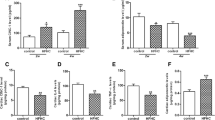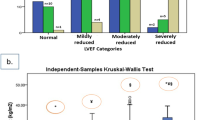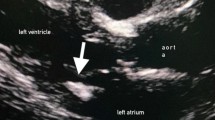Abstract
Cardiovascular diseases (CD) are the most leading cause of death in both developed and developing nations. Diseases severity depends on multiple factors like sedentary lifestyle, smoking, diabetes, and hypertension. Blood samples from diagnosed cardiac patients from several hospitals and registered pathological centers, Midnapore District, India (Feb. 2013—Jan. 2014; >45 years, male 37, and female 23) and age-matched control (male 12 and female 9) were employed for biochemical studies on lipid profiles, SGOT, LDH, CPK/CPK-MB, and troponin T levels. Oxidative stress marker malondialdehyde (MDA), antioxidant component non-protein-soluble thiol (NPSH), and superoxide dismutase (SOD) activity were tested. High lipid or fructose-fed (90 days, isocaloric to the control) rats was investigated to evaluate some risk factors and oxidant/antioxidant status in their serum, liver, and heart tissues. Serum SGOT and LDH in female cardiac patients were found to be significantly high in both trop T− or trop T+ patients. The present multiple comparison ANOVA test suggests that most of the factors and serum markers of female cardiac patients were at higher risks (significance value, p < 0.001) than those of male patients. It is noticed that the parameters are more severely impaired in trop T+ (p < 0.001) than in trop T− (p < 0.05–0.01) patients. The malondialdehyde (MDA) and NPSH levels were found to be higher in the case of serum samples of cardiac patients. In rat experiment, mean body weight of animals did not significantly change in different nutritional groups. However, the reno-somatic index (kidney weight/100 g bw) decreased significantly both in lipid or fructose-fed group. Cholesterol and triglyceride notably increased in lipid-fed and urate decreased in either diet group. The oxidant component MDA and antioxidant enzyme catalase and SOD1 activities significantly increased/impaired in rat liver and heart of lipid-fed group. It may be hypothesized that present markers and risk factors are significant for the disease initiation and pathogenesis both in male and female. The post-menopausal age group itself may be an independent risk factor in females. The animal experiment suggests that long-term high lipid consumption may initiate dyslipidemic condition with an increase in systemic oxidative stress.






Similar content being viewed by others
References
Abeywardena MY, Patten GS (2011) Role of omega3 long-chain polyunsaturated fatty acids in reducing cardio-metabolic risk factors. Endocrine, Metabolic & Immune Disorders Drug Targets 11:232–246
Astrup A, Dyerberg J, Selleck M, Stender S (2008) Nutrition transition and its relationship to the development of obesity and related chronic diseases. Obesity Reviews: an official J of the Int Asso for the Study of Obesity 9(Suppl 1):48–52
Astrup A, Dyerberg J, Elwood P, Hermansen K, Hu FB, Jakobsen MU, Kok FJ, Krauss RM, Lecerf JM, LeGrand P (2011) The role of reducing intakes of saturated fat in the prevention of cardiovascular disease: where does the evidence stand in 2010? The American J of Clin Nutr 93:684–688
Barrett-Connor E, Bush TL (1991) Estrogen and coronary heart disease in women. JAMA 265:1861–1867
Bertinchant JP, Robert E, Polge A, Marty-Double C, Fabbro-Peray P, Poirey S, Aya G, Juan JM, Ledermann B, de la Coussaye JE (2000) Comparison of the diagnostic value of cardiac troponin I and T determinations for detecting early myocardial damage and the relationship with histological findings after isoprenaline-induced cardiac injury in rats. Clin Chim Acta 298:13–28
Buege JA, Aust SD (1978) Microsomal lipid peroxidation. Methods in Enzymol 52:302–310
Burman A, Jain K, Gulati R, Chopra V, Agarwal DP, Vasisht S (2004) Lipoprotein(a) as a marker of coronary artery disease and its association with dietary fat. The Journal of the Assoc of Physicians of India 52:99–102
Burton ESM, William SE (1972) Serum enzyme determination in diagnosis and assessment of MI. Circulation 2:1–28
Cavasin MA, Sankey SS, Yu AL, Menon S, Yang XP (2003) Estrogen and testosterone have opposing effects on chronic cardiac remodeling and function in mice with myocardial infarction. Am J of Physiol Heart and Circulatory Physiol 284:1560–1569
Dhalla NS, Temsah RM, Netticadan T (2000) Role of oxidative stress in cardiovascular diseases. J of Hypertension 18:655–673
Farvin KH, Anandan R, Kumar SH, Shiny KS, Mathew S, Sankar TV, Nair PG (2006) Cardioprotective effect of squalene on lipid profile in isoprenaline-induced myocardial infarction in rats. J of Medicinal Food 9:531–536
Francis M (1995) Rapid bedside whole blood cardiac specific troponin-T immunoassay for diagnosis of acute MI. Am Heart J 75:842–845
Grohe C, Kahlert S, Lobbert K, Vetter H (1998) Expression of oestrogen receptor alpha and beta in rat heart: role of local oestrogen synthesis. The J of Endocrinol 156:1–7
Hariri N, Thibault L (2010) High-fat diet-induced obesity in animal models. Nutr Res Rev 23:270–299
Lagranha CJ, Deschamps A, Aponte A, Steenbergen C, Murphy E (2010) Sex differences in the phosphorylation of mitochondrial proteins result in reduced production of reactive oxygen species and cardioprotection in females. Circulation Res 106:1681–1691
Maiti S, Chatterjee AK (2000) Differential response of cellular antioxidant mechanism of liver and kidney to arsenic exposure and its relation to dietary protein deficiency. Environ Toxicol Pharmacol 8:227–235
Matos SL, de Paula H, Pedrosa ML, dos Santos RC, de Oliveira EL, Júnior DAC, Silva ME (2005) Dietary models for inducing hypercholesterolemia in rats. Brazilian Arch of Biol and Technol 48:203–209
Naghi JJ, Philip KJ, DiLibero D, Willix R, Schwarz ER (2011) Testosterone therapy: treatment of metabolic disturbances in heart failure. J of Cardiovascular Pharmacol and Therapeutics 16:14–23
Oury TD, Day BJ, Crapo JD (1996) Extracellular superoxide dismutase: a regulator of nitric oxide bioavailability. Lab Investig 75:617–636
Phillips GB, Pinkernell BH, Jing TY (1997) Relationship between serum sex hormones and coronary artery disease in postmenopausal women. Arteriosclerosis, Thrombosis, and Vascular Biol 17:695–701
Rajasekhar D, Saibaba KS, Srinivasa Rao PV, Latheef SA, Subramanyam G (2004) Lipoprotein (A): better assessor of coronary heart disease risk in south Indian population. Indian J of Clin Biochem: IJCB 19:53–59
Reckelhoff JF (2006) Cardiovascular disease, estrogen deficiency, and inflammatory cytokines. Hypertension 48:372–373
Roe CR, Limbird LE, Wagner GS, Nerenberg ST (1972) Combined isoenzyme analysis in the diagnosis of myocardial injury: application of electrophoretic methods for the detection and quantitation of the creatine phosphokinase MB isoenzyme. The J of Lab and Clin Med 80:577–590
Sedlak J, Lindsay RH (1968) Estimation of total, protein-bound, and nonprotein sulfhydryl groups in tissue with Ellman’s reagent. Anal Biochem 25:192–205
Slater TF (1984) Overview of methods used for detecting lipid peroxidation. Methods in Enzymol 105:283–293
Sluijmer AV, Heineman MJ, De Jong FH, Evers JL (1995) Endocrine activity of the postmenopausal ovary: the effects of pituitary down-regulation and oophorectomy. The J of Clin Endocrinol and Metab 80:2163–2167
Soler EP, Ruiz VC (2010) Epidemiology and risk factors of cerebral ischemia and ischemic heart diseases: similarities and differences. Current Cardiol Rev 6:138–149
Stanely Mainzen Prince P, Kumar MR, Selvakumari CJ (2011) Effects of gallic acid on brain lipid peroxide and lipid metabolism in streptozotocin-induced diabetic Wistar rats. J of Biochem and Mol Toxicol 25:101–107
Steinman HM (1978) The amino acid sequence of mangano superoxide dismutase from Escherichia coli B. The J of Biol Chem 253:8708–8720
Stralin P, Karlsson K, Johansson BO, Marklund SL (1995) The interstitium of the human arterial wall contains very large amounts of extracellular superoxide dismutase. Arteriosclerosis, Thrombosis, and Vascular Biol 15:2032–2036
Tappy L, Le KA (2010) Metabolic effects of fructose and the worldwide increase in obesity. Physiol Rev 90:23–46
Treadwell FH (1948) Analytical chemistry: based on the German text of John Wiley & Sons; New York, USA 9
Tripathi P, Misra MK (2009) Therapeutic role of L-arginine on free radical scavenging system in ischemic heart diseases. Indian J of Biochem & Biophysics 46:498–502
Tulp O, Gambert S, Horton ES (1979) Adipose tissue development, growth, and food consumption in protein-malnourished rats. J of Lipid Res 20:47–54
Vallance P, Collier J, Moncada S (1989) Effects of endothelium-derived nitric oxide on peripheral arteriolar tone in man. Lancet (London, England) 2:997–1000
Wagner GS, Roe CR, Limbird LE, Rosati RA, Wallace AG (1973) The importance of identification of the myocardial-specific isoenzyme of creatine phosphokinase (MB form) in the diagnosis of acute myocardial infarction. Circulation 47:263–269
Wallace KB, Hausner E, Herman E, Holt GD, MacGregor JT, Metz AL, Murphy E, Rosenblum IY, Sistare FD, York MJ (2004) Serum troponins as biomarkers of drug-induced cardiac toxicity. Toxicol Pathol 32:106–121
Xing D, Nozell S, Chen YF, Hage F, Oparil S (2009) Estrogen and mechanisms of vascular protection. Arteriosclerosis, Thrombosis, and Vascular Biol 29:289–295
Yang XP, Reckelhoff JF (2011) Estrogen, hormonal replacement therapy and cardiovascular disease. Curr Opin Nephrol Hypertens 20:133–138
Zhang QG, Raz L, Wang R (2009) Estrogen attenuates ischemic oxidative damage via an estrogen receptor alpha-mediated inhibition of NADPH oxidase activation. J Neurosci 29:13823–13836
Acknowledgements
The authors sincerely acknowledge the University Grants Commission, New Delhi, for the supporting fellowship (JRF and SRF) to M. Khan, who is a Ph.D. student of this department registered under the Vidyasagar University.
Author information
Authors and Affiliations
Corresponding author
Ethics declarations
Conflict of interest
The authors declare that they have no conflict of interest.
Ethical approval
All applicable international, national, and/or institutional guidelines for the care and use of animals were followed.
All procedures performed in studies involving human participants were in accordance with the ethical standards of the institutional and/or national research committee and with the 1964 Helsinki declaration and its later amendments or comparable ethical standards.
Rights and permissions
About this article
Cite this article
Khan, M., Jana, P., De, S.K. et al. Studies on serum biochemical parameters of trop T+ or trop T− cardiac patients and evaluation of risk factors for disease outcome with a correlation to dyslipidemic rat experiment. Comp Clin Pathol 26, 1189–1197 (2017). https://doi.org/10.1007/s00580-017-2508-1
Received:
Accepted:
Published:
Issue Date:
DOI: https://doi.org/10.1007/s00580-017-2508-1




